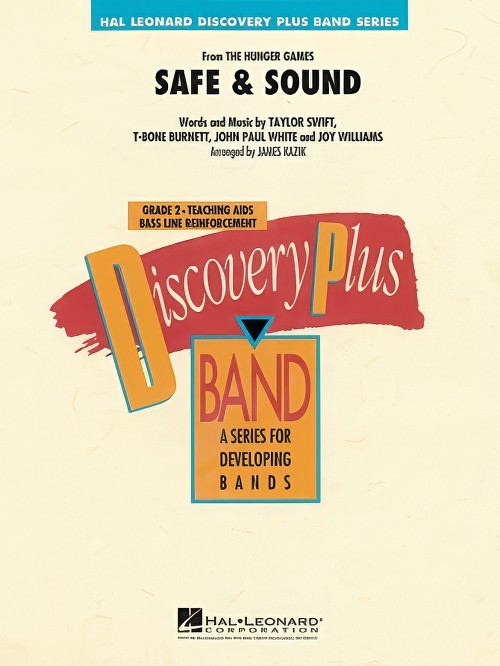Results
-
 £104.99
£104.99Richard Rodgers Collection - Richard Rodgers
Richard Charles Rodgers was one of Americas best-known musicaltheatre composers. In his lifetime Rodgers wrote hundreds of songsand no less than forty Broadway musicals including The Sound of Music, Oklahoma, South Pacific and Carousel, many of which are still loved and regularly performed today. In this wonderful collection, Peter Kleine Schaars used the songs It Might As Well Be Spring from State Fair, My Favorite Things from The Sound of Music and The Lady Is a Tramp from Babes in Arms. Add a little Broadway sparkle to any concert with this catchy item.
Estimated dispatch 7-14 working days
-
 £141.99
£141.99A Tribute to Ray Charles
Ray Charles (1930-2004) was a multitalented and pioneering American pianist and soul singer who became very popular in the late fifties, and remained respected for his music in the decades that followed. By incorporating gospel, jazz, blues, and big band elements, he helped shape the sound of rhythm and blues, and brought a soulful sound to everything from country music to pop standards. Ray Charles embodied the American dream, starting out a poor, blind boy from the southern United States and becoming an international music phenomenon; his nickname was "the Genius" for a good reasonIn this arrangement for concert band, Peter Kleine Schaars presents five of the songs thatcontributed to Ray Charles' fame: I Can't Stop Loving You, Hit the Road Jack, Georgia on My Mind, Hallelujah I Love Her So, and Unchain My Heart.
Estimated dispatch 7-14 working days
-
 £42.50
£42.50Safe and Sound (from The Hunger Games) (Concert Band - Score and Parts) - Kazik, James
From the movie soundtrack for The Hunger Games, here is a great-sounding arrangement of the hit song Safe & Sound?recorded by Taylor Swift featuring The Civil Wars
Estimated dispatch 7-14 working days
-
 £37.62
£37.62Dance of the Jester (Concert Band - Score and Parts)
A bright rhythmic piece with a modal sound that's playable with limited instrumentation. You'll love the big energetic sound your youngest students get on this appealing yet very playable number! Perfect for second year bands!
Estimated dispatch 7-14 working days
-
 £44.55
£44.55Faces of the World (Concert Band - Score and Parts)
A delightful march with a truly regal sound. The haunting melody and stately tempo make this a very appealing selection for either contest or concert use and its slightly modal sound is sure to make it a favorite with your students. Another extraordinary young band piece from a very popular composer. A REAL WINNER!
Estimated dispatch 7-14 working days
-
 £45.54
£45.54Joyful Is The Morning Sun (Concert Band - Score and Parts)
This exuberant and uplifting chorale by Matt Conaway will make bands of all ages sound fantastic. The melodies are simple and memorable, and the full, rich scoring will help even bands with reduced instrumentation sound warm and complete. An excellent addition to your next concert or festival program.
Estimated dispatch 7-14 working days
-
 £41.99
£41.99Dance of the Jester - Molter
A bright rhythmic piece with a modal sound that's playable with limited instrumentation. You'll love the big energetic sound your youngest students get on this appealing yet very playable number! Perfect for second year bands!
Estimated dispatch 7-14 working days
-
 £50.50
£50.50Joyful Is The Morning Sun - Matt Conaway
This exuberant and uplifting chorale by Matt Conaway will make bands of all ages sound fantastic. The melodies are simple and memorable, and the full, rich scoring will help even bands with reduced instrumentation sound warm and complete. An excellent addition to your next concert or festival program.
Estimated dispatch 7-14 working days
-
£71.50
The Trumpet Shall Sound - Georg Friedrich Händel
Contains arrangements of two works:No. 47. Recit. Behold, I tell You a MysteryNo. 48. Air, The Trumpet Shall SoundVocal solo with concert band accompaniment. Excerpted from: MessiahTrumpets in Bb & D furnished
Estimated dispatch 7-14 working days
-
 £42.50
£42.50Safe & Sound (from The Hunger Games) - John Paul White
From the movie soundtrack for The Hunger Games, here is a great-sounding arrangement of the hit song Safe & Sound recorded by Taylor Swift featuring The Civil Wars.
Estimated dispatch 7-14 working days
